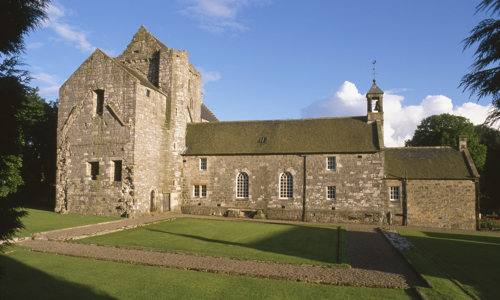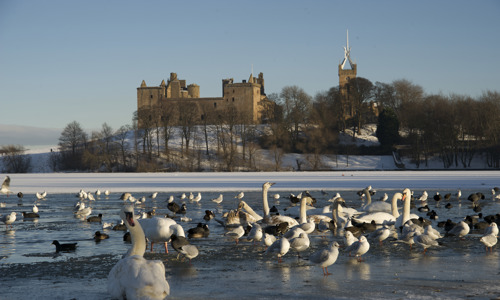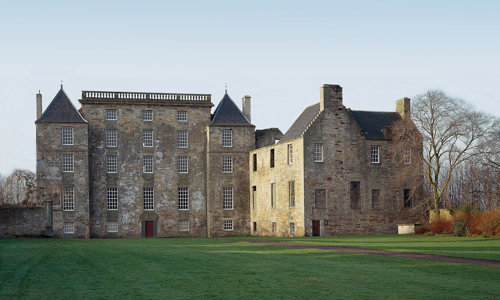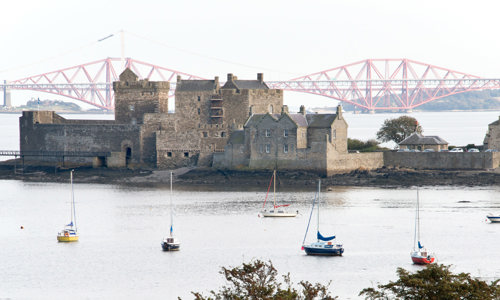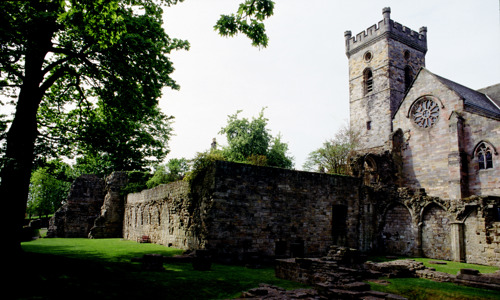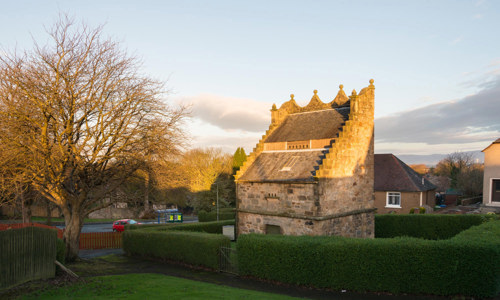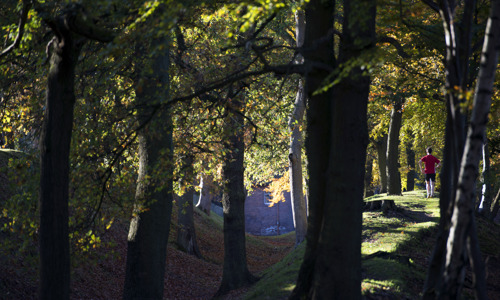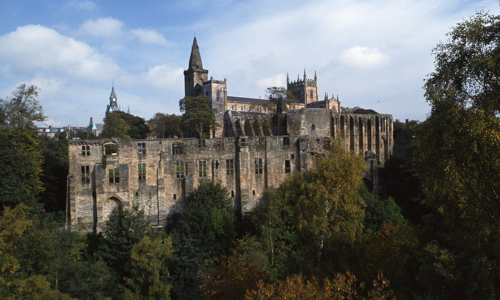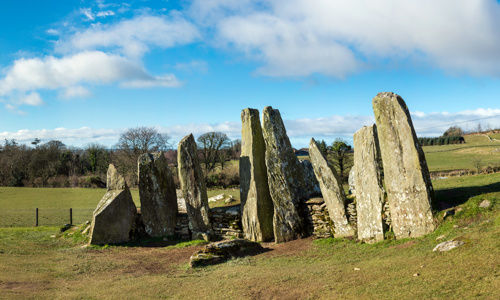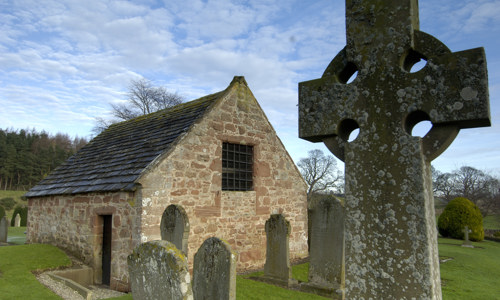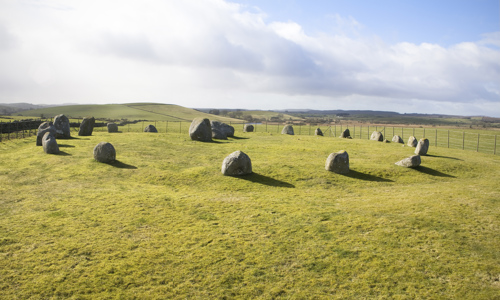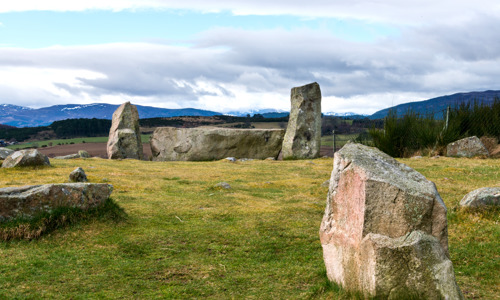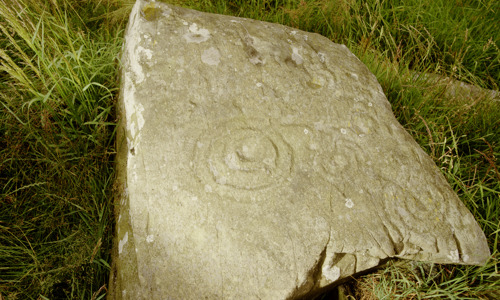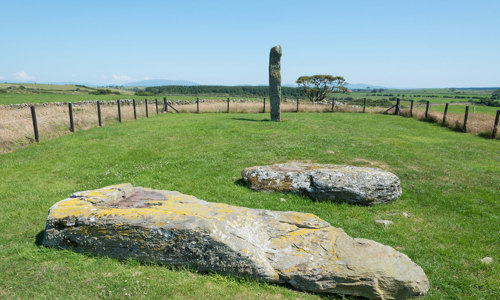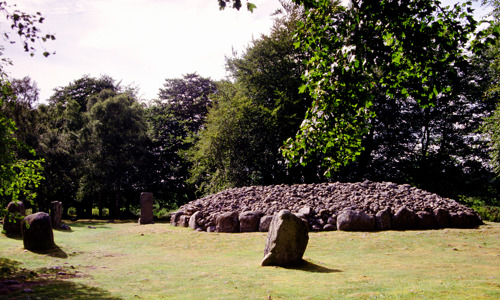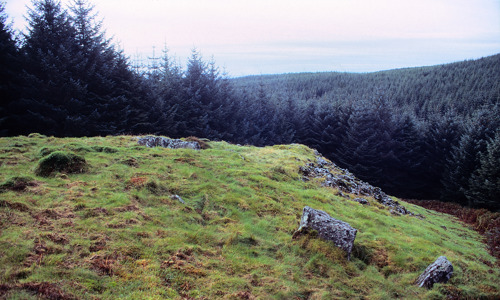History
Cairnpapple Hill is one of the best-known prehistoric sites in mainland Scotland. Its prominence in the landscape and the fine views from its summit are at least partly why this particular location developed into such a special place.
Professor Piggott of the University of Edinburgh excavated the site in 1947–8, uncovering the henge monument and later burials across the summit of the hill. Cairnpapple had been the focus of communal activity for more than 200 generations of local farmers – from the 4th millennium BC to the Christian era.
The site was taken into state care and laid out for visitors to view this remarkable legacy from our remote past.
Neolithic ceremonial site
The earliest traces of activity are six hearths dating from about 5,500 years ago. In these were found potsherds and, significantly, two stone-axe fragments from axe factories in Wales and Cumbria. Clearly the early Neolithic farmers of West Lothian didn’t lead isolated lives.
The hearths are no longer visible, as they were covered by the henge monument – a great oval earthwork enclosure – built in the later Neolithic period. The Ring of Brodgar, in Orkney, is Scotland’s best example of a henge monument.
The henge at Cairnpapple had a bank 60m across, surrounded by a broad ditch, which enclosed a ring of 24 upright timber posts. The timber hasn’t survived, but the post holes are clearly visible. There were two entrances to the henge, almost directly opposite each other.
Sadly, we know nothing of the nature of the ceremonies that must surely have taken place within henge monuments.
Bronze Age burials
The henge ceased to be used for ceremonial purposes about 4,000 years ago, during the early Bronze Age. But the local people clearly still revered it, as they buried an important member of the community there.
This first burial place was marked by an oval setting of stones, with a single large standing stone at its head. The body had been buried with a wooden mask covering the face. Two Beaker pots left alongside had probably been filled with food and drink to sustain the dead person on the journey to the afterlife.
Two burial cists were added later. These were stone-lined pits with a single massive capstone on top. A food vessel was found in one and a single human cremation in the other. One cist bore three cup-marks pecked into the surface. These burials were covered by a stone cairn, which was neatly edged with 21 kerb stones.
Finally, a much larger burial cairn was built. With a diameter of 30m, it completely covered the two earlier cairns. Pits were cut into the west and south sides of the cairn: each contained a cremation burial placed in an upturned, collared cinerary urn. Unusually, there was no central burial placed in the middle of the mound.
Natural history
Old maps show the land around Cairnpapple Hill as moorland with scattered trees. Agriculture has tamed the landscape, which is now grass pasture.
The heather by the monument is a remnant of the wild plants once found throughout the Bathgate Hills but which are now rare locally.


